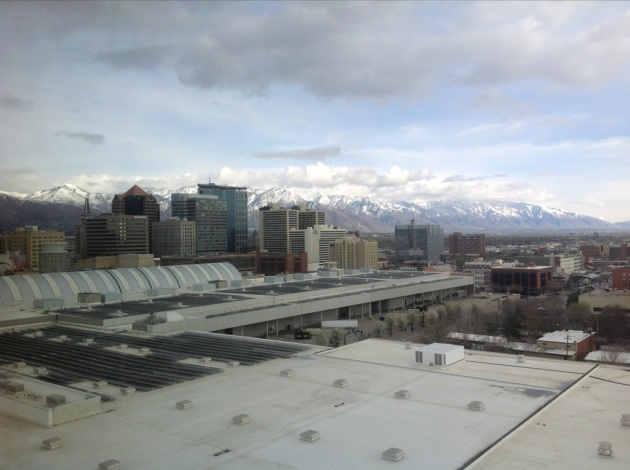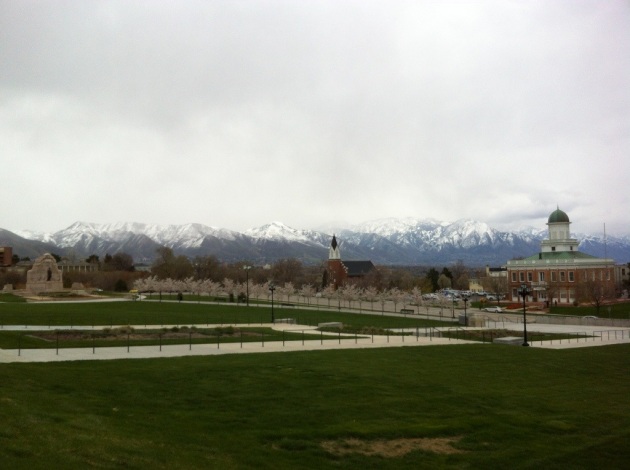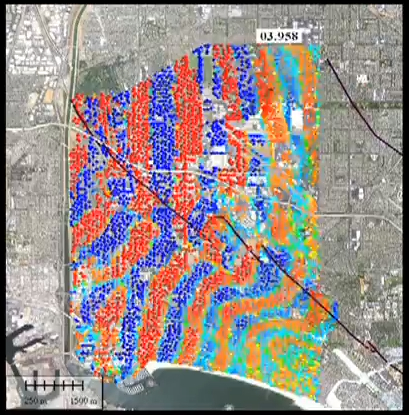
The painfully symbolic photo-op. Credit: Alessandro Bianchi/Reuters
The big seismological news that started off this week was the guilty verdict in the trial of Italian seismologists and government officials indicted for multiple manslaughter after the M6.3 L’Aquila earthquake of April 2009.
Natural hazards scientists the world over greeted this news with shock and dismay, and science-savvy folks of all stripes have expressed outrage about the verdict, let alone the trial itself. Angry scientists commonly lament this “trial against science,” and bewildered editorialists decry the absurdity of convicting and imprisoning seismologists for failing to warn people of an impending earthquake, a feat which I’m confident people generally understand to be impossible.
The problem is… Much of this outrage grossly oversimplifies the case, and in fact is commonly based on a fallacious understanding of the trial. It behooves everyone editorializing upon it to understand the nuanced details of the situation. A news feature from the journal Nature last year illuminates these details, providing a complete narrative of the unfortunate incidents that led to this dismaying conviction.
Scientists on Trial: At Fault? – Nature News Feature
In fact the trial was not about failure to predict an earthquake. Rather, the scientists were prosecuted for not fulfilling their alleged duty to properly prepare the populace for an earthquake. This is not so subtle a distinction. This reality shows the case to have more merit than the straw-man accusation of “failure to predict an earthquake,” but it still raises some important questions about how scientists should be expected to act when communicating to the public.
A fantastic synopsis of the incident, the trial, and its implications for the future of expert-to-public communication is publicly available to listen to from the Seismological Society of America, and is an essential prerequisite for informed discussion about this trail.
http://www.seismosoc.org/italy/
In that recording, Tom Jordan, director of the Southern California Earthquake Center and chair of the international group commissioned by the Italian government to report on the status of earthquake forecasting operations (ICEF: the International Commission on Earthquake Forecasting for Civil Protection), presents the short history of this incident and discusses the sophisticated questions it raises. His commission’s report is also available to view and is a more technical document, but an important read if your profession involves natural hazard or risk assessment.
Operational Earthquake Forecasting – State of Knowledge and Guidelines for Utilization – ICEF report
Okay Then, What Happened?
I highly encourage you to read the Nature article or listen to Tom Jordan’s SSA talk, but if you can’t muster the patience for those, this synopsis of those synopses may serve as a rough outline of the incident.

Post-quake L’Aquila from above. Photo credit: Guardia Forestale/AP Photo. Via the Boston Globe.
L’Aquila, a city in one of Italy’s most earthquake-prone regions, had a series of tiny earthquakes beginning in October 2008. The series escalated through March 2009, during which time a local man started issuing earthquake “predictions” based on radon measurements. These unfounded warnings had no scientific merit but began to alarm the populace as the region continued to suffer frequent small tremors. On March 30, fearing an unwarranted panic, civil protection officials cited this man for inciting public alarm and “forbade him from making any public pronouncements.” In an untimely misfortune, a 4.1 earthquake then struck the region.
Fearing further alarm, the head of the Department of Civil Protection called for an immediate meeting of the National Commission for Forecasting and Predicting Great Risks, in L’Aquila. Given the fluctuating spread and suppression of misinformation, the lack of accurate information, and thus the context of alarm and confusion, it’s not surprising that the press’s involvement at and around this hastily arranged meeting spelled doom for reasoned communication of the real risks. As Tom Jordan et al.’s report mildly explains,
“[during an earthquake sequence] earthquake probabilities may vary over orders of magnitude but still remain low in an absolute sense (<1% per day). Translating such low-probability forecasts into effective decision-making is a difficult challenge.”
Indeed the seismologists and civil protection authorities apparently grappled with how to explain that this ongoing earthquake swarm did not substantially increase the already substantial regional hazard of earthquakes. They discussed the empirical history of earthquake swarms and how they rarely (<2% of the time) resulted in large mainshocks, but were careful to state that that specific risk couldn’t be excluded. They turned their focus instead to dispelling the alarm caused by untested and poorly vetted prediction schemes. Unfortunately, they let the audience guide their discussion. When faced with the unanswerable question of whether there was an imminent large earthquake to worry about, phrased with disarming cultural charm–“so we should go have a nice glass of wine?”–the vice-director of the Department of Civil Protection was jovially lured into a fatal appeasement of the citizens’ fears. “Absolutely.”
Then the most unfortunate coincidence of all occurred. This was one of those <2% when the swarm unleashes a big one. That night (April 6) the M6.3 roared out from the hillsides and collapsed 20,000 buildings in and around L’Aquila, killing 309 people.

Hai Sentito Il Terremoto? The Italian Instituto Nazionale di Geofisica e Vulcanologia’s crowd-sourced shaking map of the April 6 L’Aquila quake.
The prosecution was brought by several men who had lost their entire families after deciding notto sleep outside as would have been customary after the small preceding shocks. As one of them claimed,
“[the messages from the commission meeting] may have in some way deprived us of the fear of earthquakes. The science, on this occasion, was dramatically superficial, and it betrayed the culture of prudence and good sense that our parents taught us on the basis of experience and of the wisdom of the previous generations.”
Of course it is absurd to lay this loss on the shoulders of scientists, when so many individual decisions and uncontrollable instances led to these specific deaths. A more direct culprit that comes immediately to mind is earthquake-vulnerable construction. The twist here is that the populace had already accounted for that in their cultural custom of sleeping outside after quakes. In their eyes the “official word”–twisted and accidental as it had been–contradicted their understanding of safety “procedures” and misled them into harm. In essence, the scientists failed to fill an information vacuum: they dispelled the alarmism but didn’t replace it with the facts, or even appropriate guidance about the existing earthquake risk. Whether it was their civil duty to do so, and whether their failure to constituted criminal negligence or worse, was subsequently left up to the courts, and now we see how that turned out.
The ICEF report explains the problem precisely:
“Information vacuums can spawn informal predictions and misinformation, and … relying solely on informal communications between scientists and the public invites confusion. In this context, the deployment of systematic and transparent procedures for operational earthquake forecasting must be seriously considered.”
The series of unfortunate incidents and hastily orchestrated public outreach that led to this dismaying conviction invite challenging questions about the role of scientists in public policy and the complicated endeavor that is risk communication and mitigation. They also underscore the need for unified (or uniform) and culturally aware procedures, and offer some lessons that will guide the development of these. Understanding what to tell people about inherently unpredictable risks is hard enough, but when colloquial notions about the risk supplant proper information from authoritative sources, the reversal of these culturally ingrained practices becomes truly formidable.
At the end of the ICEF report, the authors lay out a roadmap for responsible operational earthquake forecasting. Their guidelines are informed by current technologies and practices, and call for continued efforts to test quake forecasting models. In the end they leave us with a sort of mantra of the seismological community:
While the responsible scientific research on earthquake predictability should be encouraged and operational forecasting capabilities should be developed, these activities cannot substitute for civil protection actions well in advance of earthquakes, for example in the design and planning of new buildings, or retrofitting of older ones identified as being at risk. Preparing properly for earthquakes means being always ready for the unexpected, which is a long-term proposition.
With a full understanding of the L’Aquila debacle, I expect that seismologists and the public can maintain a productive and orderly discussion as we develop more useful ways of understanding and communicating earthquake hazard. California’s got a big head start, since we’ve been training you for decades what it means to live in Earthquake Country.
 Big quakes in the past week
Big quakes in the past week















